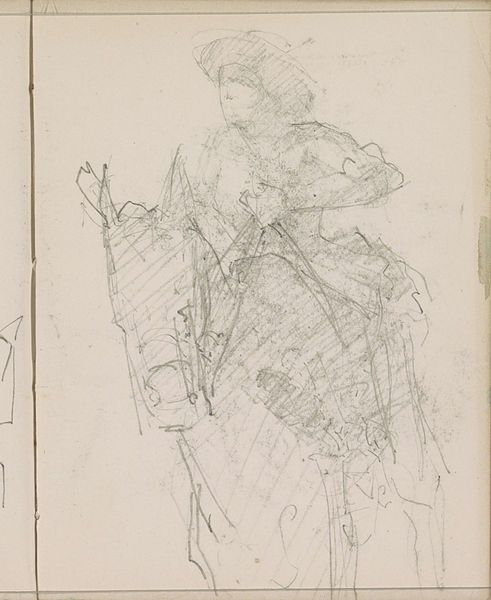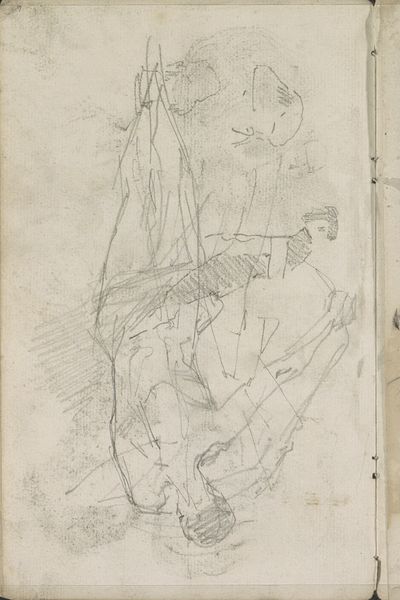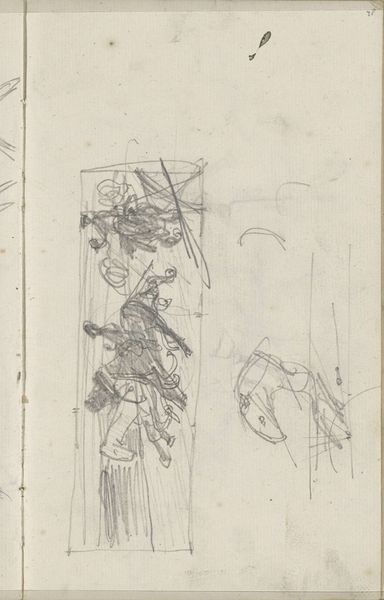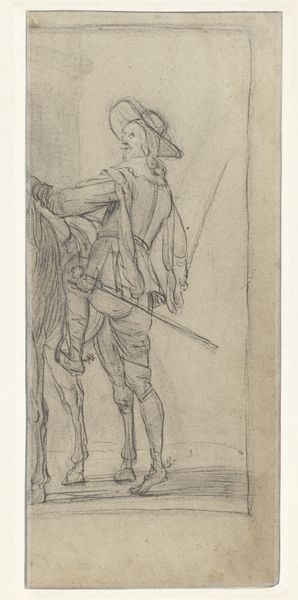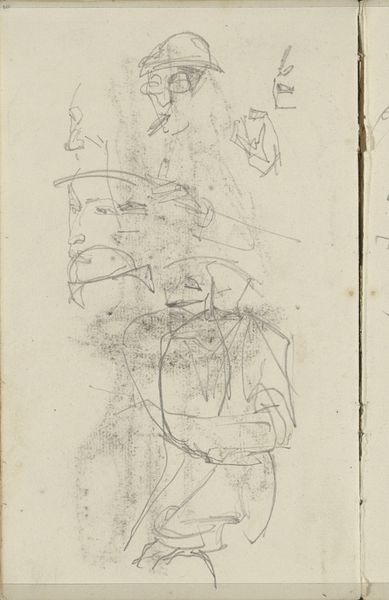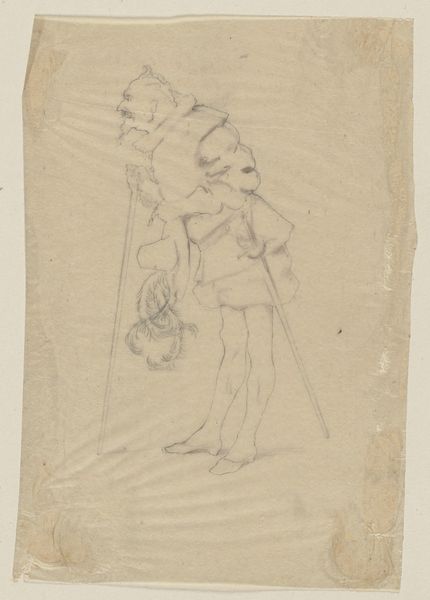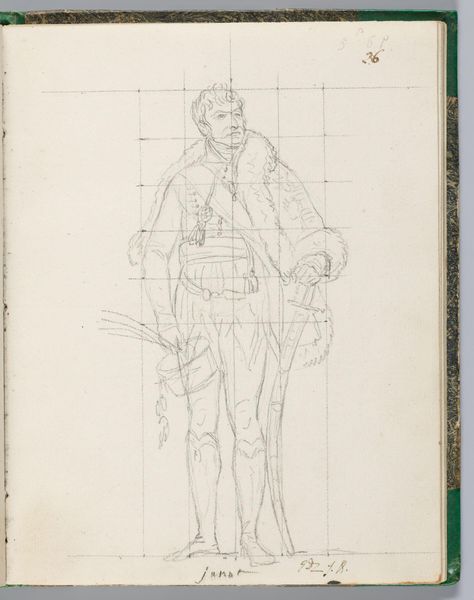
drawing, pencil
#
portrait
#
drawing
#
imaginative character sketch
#
quirky sketch
#
impressionism
#
figuration
#
personal sketchbook
#
idea generation sketch
#
sketchwork
#
pen-ink sketch
#
pencil
#
sketchbook drawing
#
storyboard and sketchbook work
#
sketchbook art
#
initial sketch
Copyright: Rijks Museum: Open Domain
Editor: So, this is "Man leunt tegen een muur," or "Man leaning against a wall," by George Hendrik Breitner, around 1882. It’s a pencil drawing at the Rijksmuseum. The figure seems so nonchalant, but there's also a real weight to the lines, a certain gravity in the posture. What do you see in this piece? Curator: Beyond the apparent nonchalance, I sense a deeper resonance. Consider the symbols inherent in leaning. It speaks to a posture of waiting, observation. But what is he waiting for? Look at the clothing; it suggests a certain status, perhaps military, certainly civic. What did those symbols mean in Breitner's Amsterdam? This is not simply a man, but a representation of civic identity, and perhaps, a critique of its burdens. The artist is, in effect, asking, what is the psychic toll of maintaining a social role? Editor: That’s fascinating! I hadn’t considered the social aspect of the image so much. So, is the wall just a literal wall? Curator: Walls, like clothing, carry symbolic weight. In this sketch, the wall creates a liminal space: is the man inside or outside? The sketch’s composition suggests that this citizen may not want to carry on in a social context. I would push further by asking if the subject's presence could represent a yearning for something beyond the visible, for a space beyond those prescribed in daily civic life. Is this an identity the sitter wants to escape? Editor: Wow, it’s incredible how much the image opens up when you consider the symbols. Curator: Indeed. Art often acts as a mirror reflecting not just the visible world but also the subtle codes and cultural memory embedded within it. By analyzing symbols, we are, in effect, reading a culture's diary. Editor: This has given me a new appreciation for how artists encode so much information into seemingly simple drawings. Thanks!
Comments
No comments
Be the first to comment and join the conversation on the ultimate creative platform.

